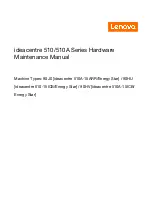
About the Command Line Interface
13
About the Command Line Interface
This guide is intended for system administrators, developers, and engineers
who need to use the command line interface (CLI) tool and its associated
commands and script files. Selected CLI commands perform functions that
you can also access from the Modular Disk (MD) Storage Manager, which is
the graphical user interface (GUI) to the storage array. See the
User’s Guide
,
which
describes the
Storage Manager software that is used to create and manage
multiple storage arrays. For additional information, see the hardware and
software manuals that shipped with your system.
NOTE:
Always check for updates on
support.dell.com
and read the updates first
because they often supersede information in other documents.
NOTE:
CLI commands do not have interactive warnings for destructive commands.
The command line interface (CLI) is a software tool that enables storage
array installers, developers, and engineers to configure and monitor storage
arrays. Using the command line interface, you can issue commands from an
operating system prompt, such as the Microsoft
®
Windows
®
command
prompt (
C:\
)
or a Linux operating system terminal.
Each command performs a specific action for managing a storage array or
returning information about the status of a storage array. You can enter
individual commands, or run script files when you need to perform operations
more than once (such as installing the same configuration on several storage
arrays). A script file can be loaded and run from the command line interface.
You can also run commands in an interactive mode. Interactive mode enables
you to connect to a specific storage array and rapidly enter a command,
determine the effect on the storage array, and then enter a new command.
The command line interface gives you direct access to a script engine utility
in the Dell™ PowerVault™ Modular Disk Storage Manager software (MD
Storage Manager). The script engine reads the commands, or runs a script
file, from the command line and performs the operations instructed by the
commands.
Summary of Contents for PowerVault MD3000i
Page 12: ...12 Contents ...
Page 42: ...42 About the Script Commands ...
Page 90: ...90 Using the Virtual Disk Copy Feature ...
Page 104: ...104 Maintaining a Storage Array ...
Page 222: ...222 Script Commands ...
Page 228: ...228 Sample Script Files ...
Page 236: ...236 Index ...














































